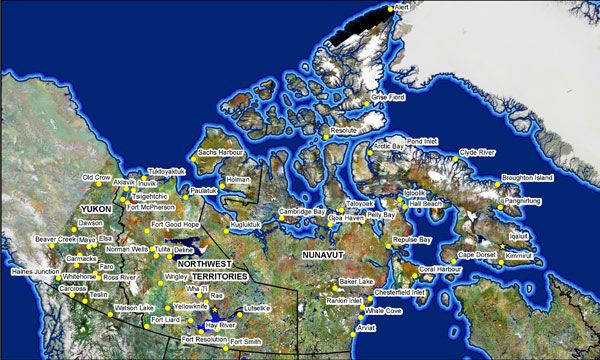Column: Fort Smith: What a road can do

Arctic Comment
Dec. 13, 2005
Most of the small communities I've travelled to in the North have been in Nunavut; meaning there are no roads connecting them to anything. The only way to get there is to fly on the type of small planes most mothers would never board. If you're lucky enough to get the ones which have the lawn-chair type seats and allow a glimpse through the front windshield as you're coming in, the bizarreness crystallizes before your very eyes as you see nothing, then more nothing, then POW, a little circle of wagons, huddled together in the Arctic night.
Most of these places have less than 2,000 residents, no stop signs, and few cars. The area where you might find a sidewalk in other small towns is patrolled by snowmobiles. Life here makes little sense to the casual observer and goods are often barged in during a two-month ice-free shipping season. Most of these communities have little to no economy. Even that brass ring of eco-tourism is a tough sell when the Canadian middle class can't use that car they've been paying off for the past four years to come see what you have to offer.
I write now about Fort Smith, the most southern community in the Northwest Territories. The NWT is a little different from Nunavut in that about a third of its thirtysome communities are directly linked by an all-weather road to southern Canada.
Having been to a number of these fly-in, huddled wagon settlements in the eastern arctic, the trip to Fort Smith was my first to a small NWT community far away from Yellowknife. And while it doesn't have traffic lights, it has sidewalks, which, as a point of interest, were actually cleared for pedestrians the morning I was there.
A flip through the grocery store flyer included with my local Slave River Journal revealed that prices on the shelves were indeed comparable to Yellowknife. There is some debate over how much more expensive living in Yellowknife is compared with an urban centre in southern Canada, but it is nowhere near as ludicrous as living in Nunavut.
And instead of a "greasy hamburger you wouldn't want to eat in any other part of the world" and a plate of soggy fries costing you $20 or $25 (as it does in many Nunavut communities), this same gross burger et frites is about $7 in Fort Smith. Now it seems nearly every community in the North needs to work on the quality of their burgers and fries, but that's really another topic. I'm just saying we're using apples and apples here.
And the town is spread out. Houses have lots and look similar to those in any Northern Ontario town. There is a banner draped over one of the main streets declaring "Fort Smith the Garden Capital of the North." As a side note, this town of 2,300 people was the NWT capital from 1911 until 1967, when it lost the title to an overgrown mining camp named Yellowknife.
A road brings vitality to a community. It immediately brings down the cost of everything and makes it a place where people can actually expect to live without an inflated government wage to keep them afloat until the next plane ride back to civilization.
There are currently what seem like fantastical proposals being bandied about by Northern politicians to build a road all the way up to the top of the NWT and from Manitoba up to Nunavut's Kivalliq region on the Western coast of Hudson Bay.
These proposals, if approved, would cost a total of about $1.5 billion to complete. This money would go to improve the lives of about 15,000 people. Many people would say this isn't worth it. But the longer I've been up here, the more I really start to believe that in one of the richest countries in the world, all Canadians deserve a road out of town. I've seen what it can do.
Zai jian


